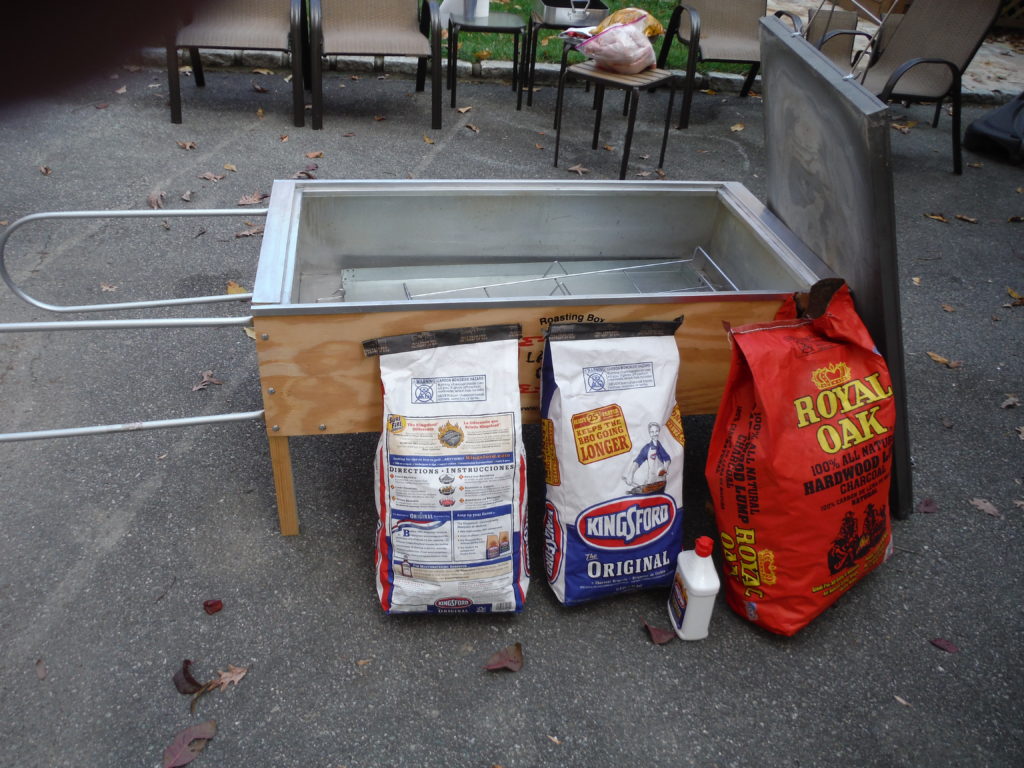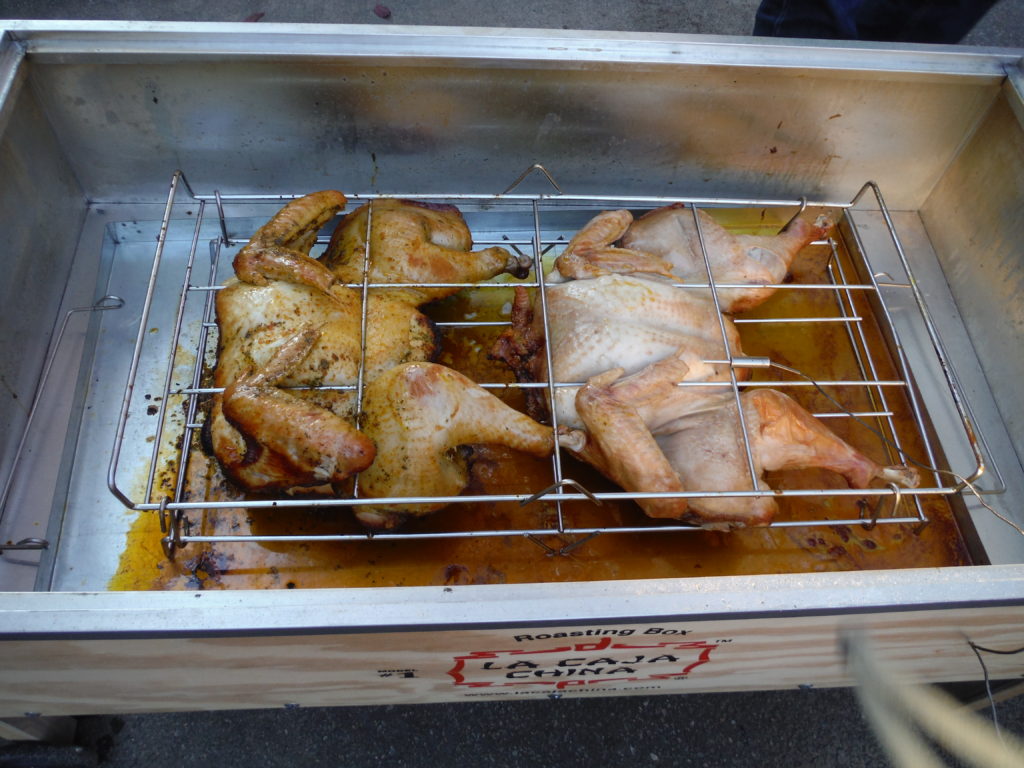For the third year in a row, we had a large group of relatives over for Thanksgiving, and I cooked turkeys in La Caja China, a Cuban-American outdoor cooker which was invented as a pig roaster for Lechon. (A Cuban-American co-worker told me that Cuban slang is to refer to something clever as being Chinese. Thus this is a clever roasting box.) This same basic approach will work fine in a conventional oven, but such an oven is too small to cook the two or three turkeys we needed for our guests.
Spatchcocking a turkey means removing the backbone and breaking the breastbone so that the turkey can be laid out flat, with the two breast halves in the center and the legs on either side. Spatchcocking has two key advantages:
First, it accelerates the cooking of the turkey. An 18 lb. spatchcocked turkey will cook in about two hours in a moderate oven.
Second, it solves one of the key problems of cooking a turkey, which is that the ideal is for the breasts to be cooked to a lower temperature than the legs. The conventional way to cook a turkey (in the round and breast up) is actually contrary to what is ideal, since the breast gets exposed more to the oven heat while the legs are relatively sheltered. Thus if the breast is perfect the thighs are undercooked and if the thighs are perfect the breasts are over cooked. By spatchcocking the turkey, the breasts are relatively sheltered while the legs are more exposed, and therefore each part can be cooked to more of its ideal temperature.
Here is La Caja China:
The process with La Caja China is to load the spatchcocked turkeys into the metal frame, cut side up and with a temperature probe inserted into one of the turkey breasts. In this photo, the one on the left is a Puerto Rican style turkey ( Pavochon – see separate post) and the one on the right is a conventional turkey.
Then 16 lbs. of charcoal are lit. When fully lit, they are spread on the top of the roaster and burned for an hour.
At the end of the hour, the box is opened, the frame is flipped so that the turkeys are now skin side up, the box is recovered, and an additional 8 lbs. of charcoal are spread on the top. After about a second hour, the internal temperature of the breasts should be about 155 degrees and the turkeys will be done. The one at the left in the photo below has more color because it was marinated in achiote oil, which is red.
Remove them from the box, tent them with aluminum foil to rest for about 10 minutes, and then carve them. The turkey will be very juicy and flavorful.


![DSCF1013[1]](http://greasylittlebirds.com/wp-content/uploads/2015/11/DSCF10131-1024x768.jpg)



